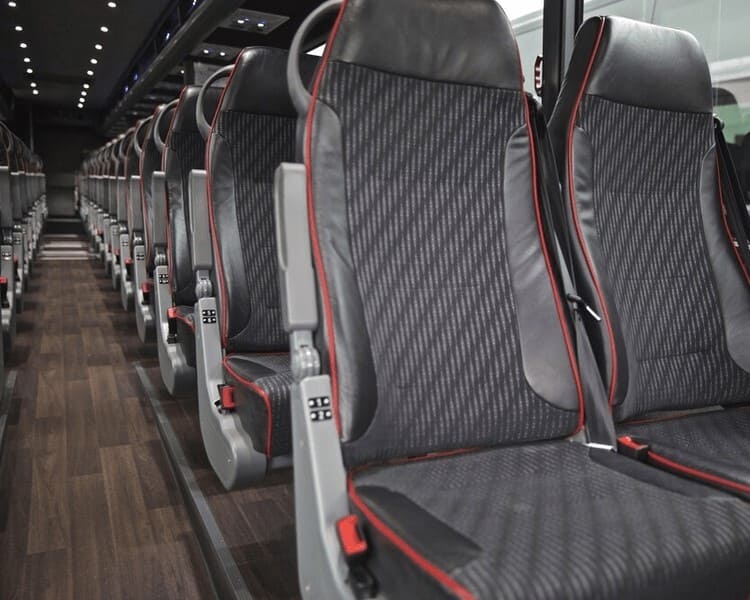Here are 10 top strategies for planning routes and covering the transportation of employees.
1. Employees Need to Understand the Situation
Surveys or focus groups can be a fantastic method to find out which areas employees reside, what shuttle time they prefer, and whether there are any particular needs (such as accessibility needs). This information is crucial in designing routes that maximize participation and satisfaction.
2. Examine traffic patterns
Check out the traffic patterns in your local area and look for the peak times. Utilize tools like Google Maps traffic data to identify congested routes and be sure to avoid them during shuttle times. This can reduce delays and ensure an enjoyable journey.
3. Utilize Technology
Install a route planning program which can optimize routes based upon real-time data on traffic patterns and employee schedules. Apps for shuttle service allow you to change your routes so that you can always provide the most efficient service.
4. Establish Strategic Pickup Points
Find central locations in which most people are able to be easily accessed. Consider picking locations close to major transportation hubs and residential zones. This will increase coverage and avoid extending the route.
5. You should make your schedule flexible
Develop a shuttle program that is flexible enough to meet the varied work times of employees. Offering shuttles during peak arrival and departure times and also off-peak times, can help accommodate different shifts and increase overall participation.
6. Implementing a Feedback Loop
Encourage employees to provide feedback about shuttle service. Make use of this feedback to make adjustments to routes, schedules or pickup points. If you regularly assess the satisfaction of employees you can provide a service that is tailored to their requirements.
7. Monitor and analyze usage information
Track the usage of shuttles, and pinpoint routes which are most popular. By analyzing this data you can make more informed decisions regarding how to distribute resources or improve the service.
8. Promoting carpooling and ridesharing
Encourage employees to participate in a carpooling scheme in conjunction with shuttle services. This could reduce shuttle requirements and give greater flexibility. Apps that let users to share rides may lower the cost of transportation.
9. Consider Environmental Impact
Plan routes that minimize carbon emissions by using energy-efficient shuttles. Instruct your shuttle service to make use of electric or hybrid vehicles. This will not only support your sustainable goals, but it can also resonate with employees who appreciate environmentally-friendly practices.
10. Assure Safety and Compliance
Make sure that the shuttles conform to safety rules and legal standards. Regularly scheduled maintenance of vehicles, training and certification for drivers and insurance coverage are all part of this. In the planning of transportation, safety should be the first priority.
By incorporating these strategies by incorporating these strategies, you can build an effective employee shuttle transportation system to meet the needs of your staff, while ensuring security and efficient use of resources. See the best employee transportation advice for website info including shuttle airport bus, san francisco airport shuttle service to hotels, shuttle van, airport shuttle service, shuttle atl, los angeles airport shuttle, new york airporter, miami airport transportation, shuttle for the airport, private car service near me and more.

Top 10 Tips For Customer Service And Communication A Corporate Event Transport Service
Here are 10 tips for improving communication and customer service for a corporate event transportation service.
1. Create an Transportation Coordinator
Assign a transportation coordinator to supervise all aspects of transport services during the event. This individual should be the primary point of contact for all transportation-related inquiries, ensuring that attendees have access to timely and accurate information. The use of a coordinator can improve the customer experience by streamlining communication.
2. Offer Clear and Complete Information
Inform the participants of any important information regarding transportation well before the event. Include details like the pickup location (including schedules), the types of vehicles, contact details, and any other pertinent information. This will allow attendees to better plan their travel plans and lessen confusion on the day of.
3. Utilize Multiple Communication Channels
Utilize different channels of communication to communicate with participants. This could include email as well as mobile apps, an event websites as well as printed material. Because different attendees will prefer different methods of communication by using different channels, it is important to ensure that all attendees are aware.
4. Create a transportation frequently asked questions
Create an inventory of frequently asked transportation questions (FAQs) which address frequent concerns. This document can include information on accessibility, lost items, emergency contacts, and many other pertinent topics. A FAQ could reduce the number of customer inquiries and improve the overall customer experience.
5. Give Real Time Updates
Set up an update system to keep participants informed of any changes or updates to the schedule of transportation. Mobile apps or text messages to send alerts. Real-time updates can help maintain expectations and keep participants on the same page, especially when delays are possible.
6. Train drivers on customer service abilities
Train drivers who are in customer service. Drivers must have excellent communication skills, be friendly and informed about activities. Positive interactions can help attendees feel appreciated and valued by the drivers.
7. Get Feedback on the Event
Provide attendees with opportunities to give feedback on their travel experience at the event. This can be done via quick surveys or comment cards. This allows you to implement immediate changes and show your commitment to improve customer service.
8. Assist in ensuring accessibility for all attendees
Inform the public in a clear manner about accessibility features of the transport service. Make sure that the vehicle is equipped with the appropriate equipment to accommodate people with disabilities. Information on accessibility options should be easily accessible. Prioritizing accessibility will show that you're committed to inclusivity.
9. Follow-Up Following the Event
When the event is over, follow up with attendees to thank them for their participation, and to collect feedback on their transportation experience. This can be done via email surveys or thank-you notes. You can show that you appreciate their feedback by sending an email follow-up or thanking them for attending.
10. Document Lessons for Future Events
To be able to refer back to later it is important to record any lessons learned from feedback you received. Review the positives and drawbacks of your event and refine your plan of action in light of these findings. Continuous improvement in customer service will enhance the experience of guests and will increase overall satisfaction.
With these strategies, companies can enhance their customer service communications, corporate event transportation services. A clear communication system, a dedicated assistance and prompt feedback mechanisms are crucial to ensure an enjoyable event experience. This reflects positively on the organization that hosts the event. Customer service that is exceptional will distinguish an organization in a competitive marketplace. This will foster lasting connections and improve the overall experience of attendees. Take a look at the best basics about corporate event transportation for more tips including logistics web, us transport, logistics web, business logistics, transport manager job, transport job, luxus transportation, luxus transportation, mgt logistics, transport comp and more.
